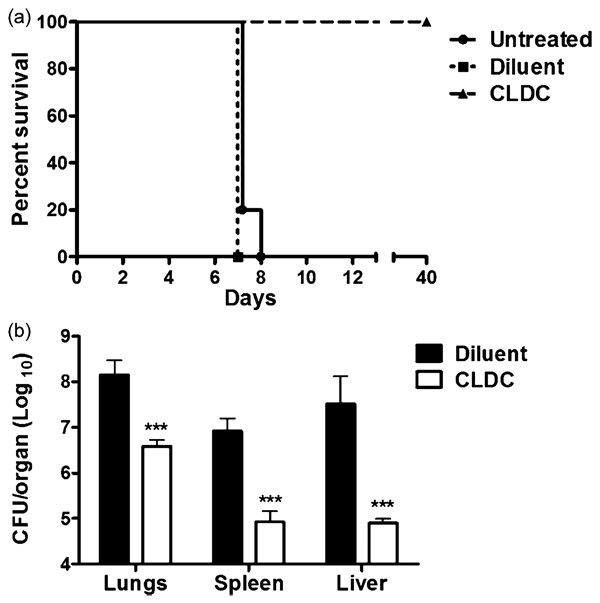Fig. 1.
Mucosally administered CLDC immunotherapy generates rapid protection against F. tularensis pneumonia. BALB/c mice (n = 5 per group) were administered CLDC by the i.n. route, as described in Section 2, or were sham-treated with diluent (5% dextrose water) alone. Twenty-four hours later, mice were subjected to i.n. challenge with 105 CFU F. tularensis LVS, as described in Section 2. In (a) survival times for each group of mice were plotted using a Kaplan–Meier curve. In (b), organ bacterial burdens were determined on day 6 after bacterial challenge, as noted in Section 2. Bacterial burden in all 3 organs assessed were significantly lower in CLDC-treated mice than diluent treated mice as assessed by Student’s two-tailed t test (***p < 0.001). Group means are plotted (±SD). Each experiment was repeated once with similar results.

